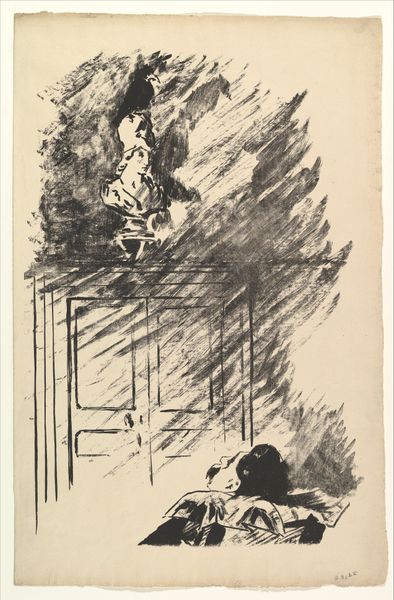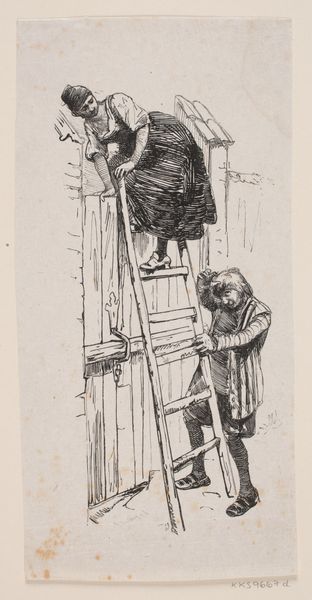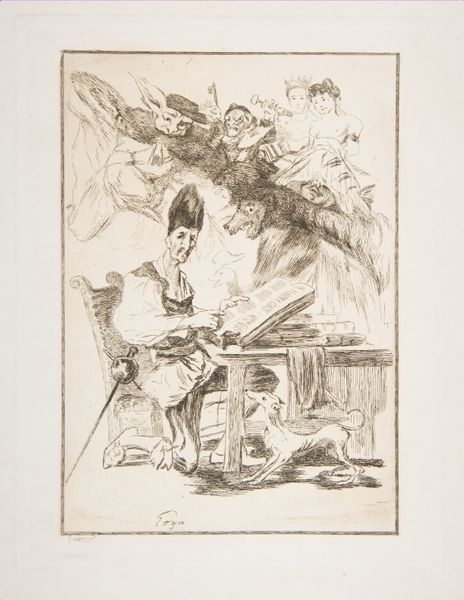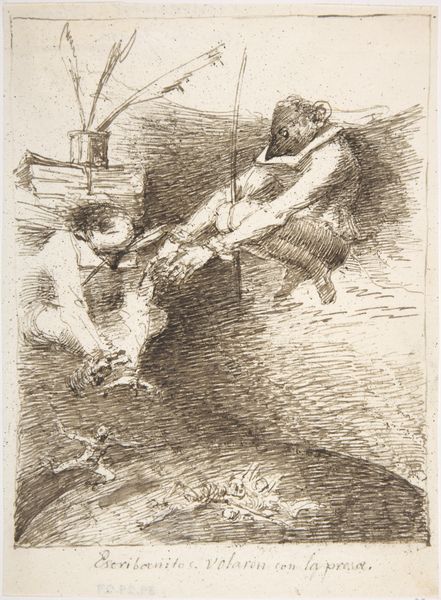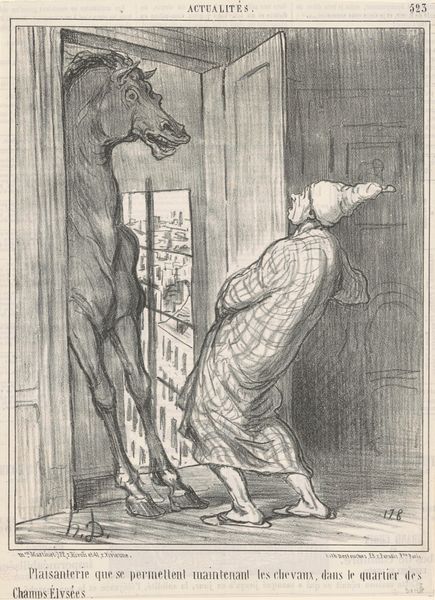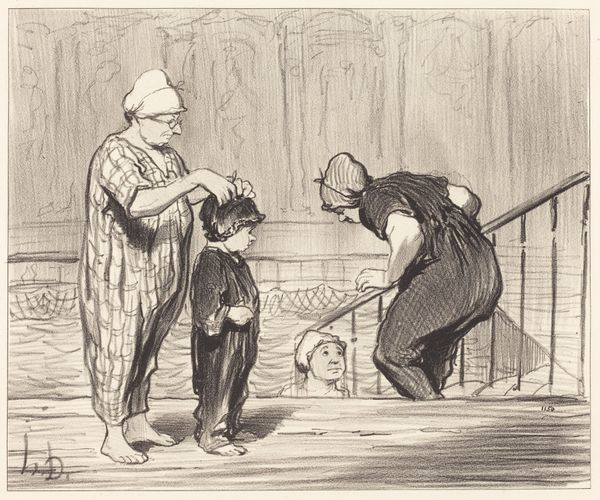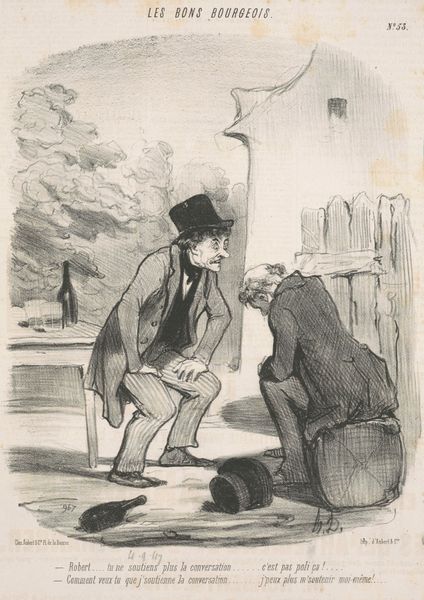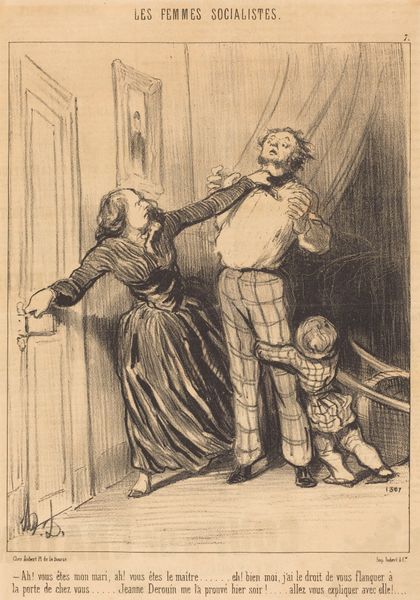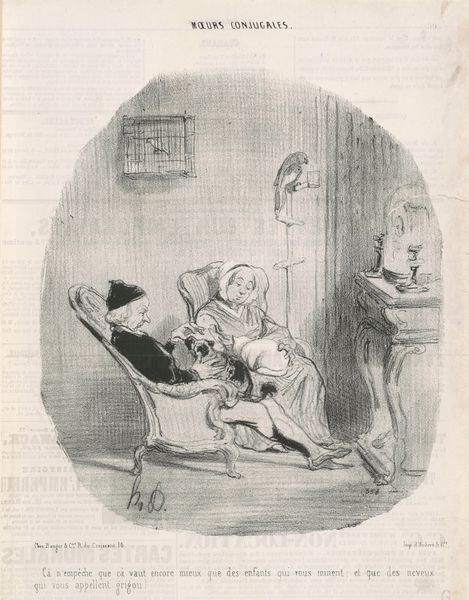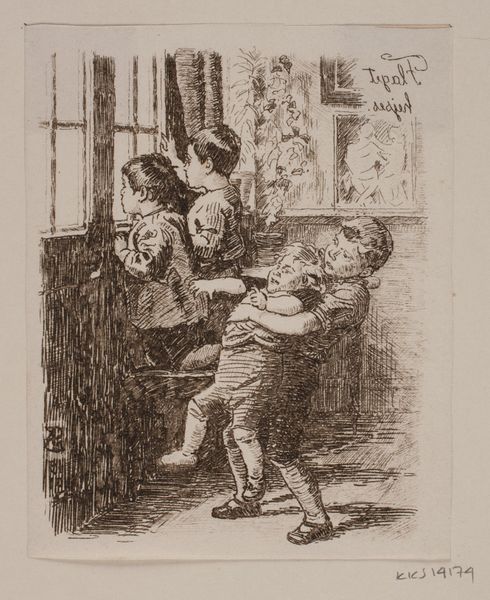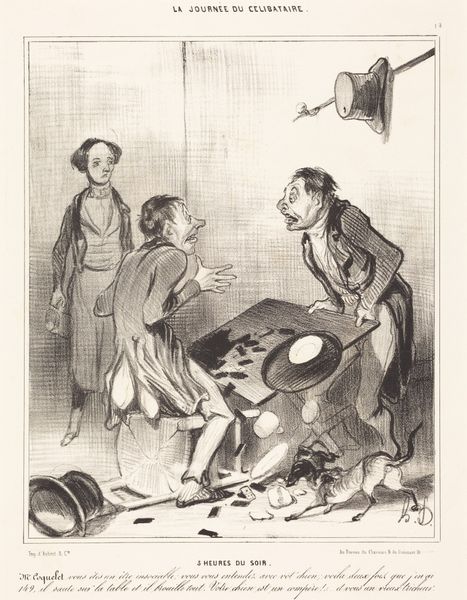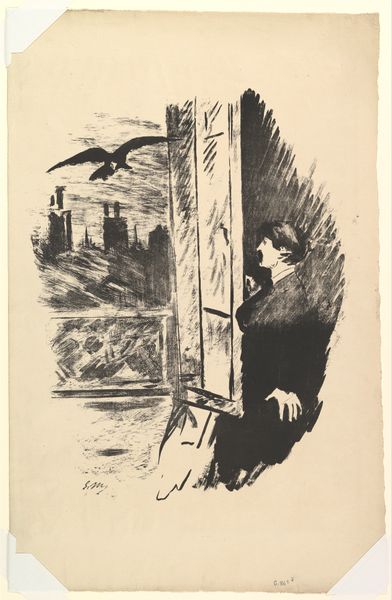
lithograph, print
#
lithograph
# print
#
caricature
#
old engraving style
#
genre-painting
#
realism
Copyright: National Gallery of Art: CC0 1.0
Editor: This lithograph, "Inconvénient de demander des réparations..." by Honoré Daumier, created in 1847, really captures a feeling of disruption. There's a worker causing chaos on the stairs while the residents look on. What do you see as its commentary? Curator: I see this as a powerful snapshot of 19th-century Parisian social dynamics. Daumier was acutely aware of the power imbalances between landlords and tenants. He published with Philipon’s satirical papers, actively engaging in critique of the bourgeois elite, a pattern repeated here, wouldn’t you say? Editor: Absolutely. There’s a strong sense of social commentary, highlighting the plight of everyday people. How does this print engage with the political climate of the time? Curator: It’s crucial to remember that this was during the July Monarchy, a time of growing social unrest. Daumier’s print offered a visual critique of bourgeois indifference, contributing to the rising tide of republican sentiment. Does this connect to later movements, do you think? Editor: Definitely, you can see a clear link to later social realism and even some forms of political street art. Were there specific artistic movements that influenced this? Curator: Realism, undeniably. Daumier rejected idealized portrayals, instead, focusing on depicting the realities of everyday life. What's compelling is that this depiction of everyday life directly became a powerful tool of social commentary. Any surprises in it for you? Editor: I never really connected social commentary with "realism" explicitly before. Thinking of art as activism or at least, a form of protest, gives it an extra dimension for me. Thanks! Curator: Precisely. Daumier shows us that art isn't detached from societal struggles, but deeply entangled within them. Seeing the social roots and function is critical.
Comments
No comments
Be the first to comment and join the conversation on the ultimate creative platform.
